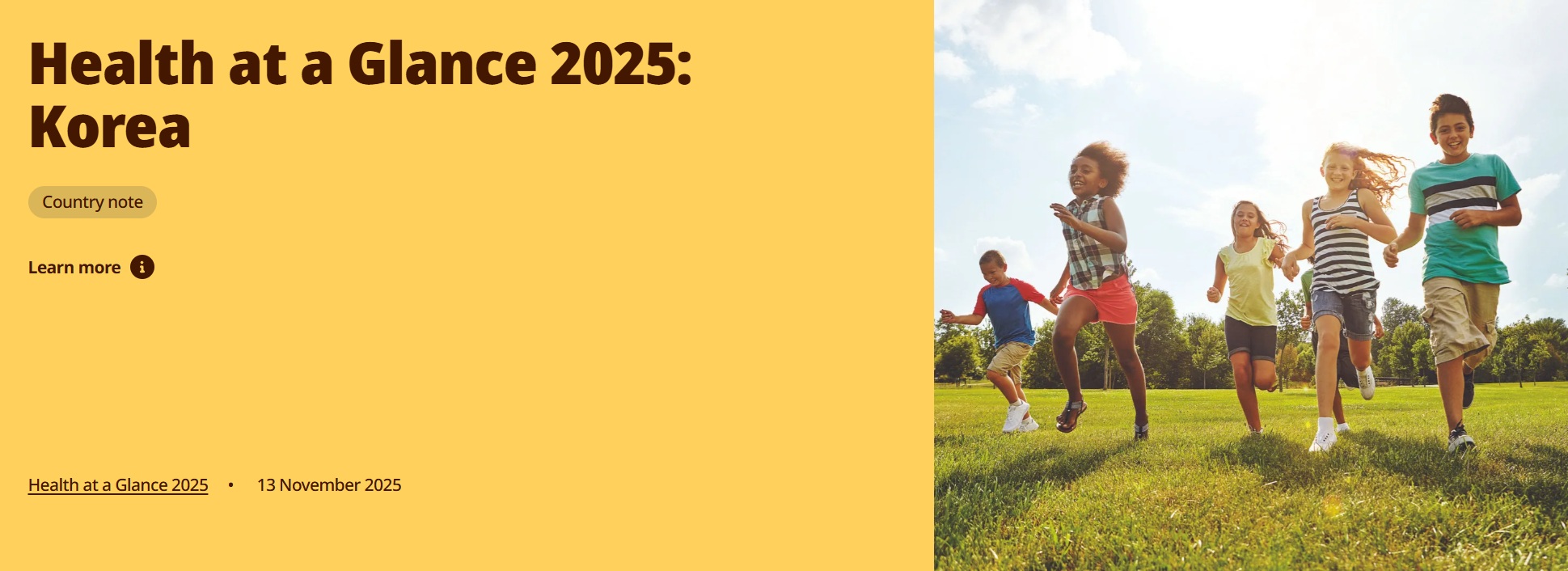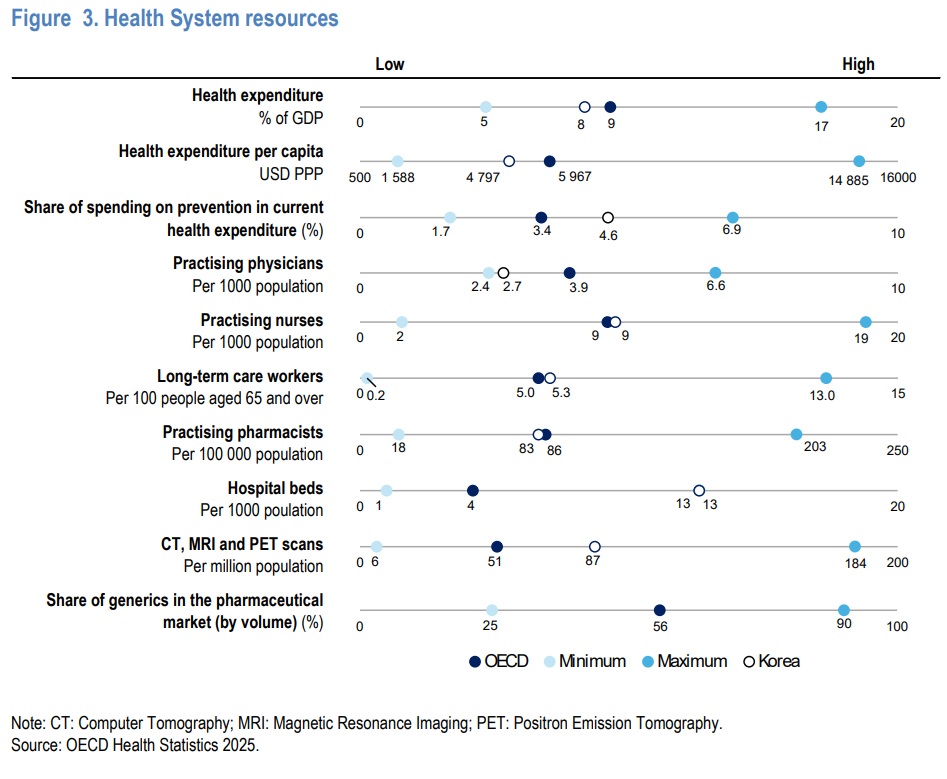Korea continues to outperform the Organisation for Economic Co-operation and Development (OECD) average across many measures of population health, access to care, and system capacity, according to the “Health at a Glance 2025” country report released last week.
The latest data show that the country maintains high life expectancy, low preventable mortality, strong vaccination and cancer screening coverage, and one of the world’s most robust hospital bed and imaging equipment capacities.
However, persistently high suicide rates, widespread physical inactivity, and relatively low financial coverage within the national health insurance structure highlight ongoing gaps that require policy attention.

Stronger life expectancy and cancer screening, but suicide rate remains the highest in OECD
Korea’s life expectancy reached 83.5 years, exceeding the OECD average by more than two years. Preventable mortality and treatable mortality both remained well below OECD levels, reflecting effective public health interventions and broad access to essential clinical services.

Cancer screening coverage was also higher than the OECD average, with seven in ten eligible women undergoing mammography. Childhood vaccination rates similarly remained strong.
At the same time, the country continued to report the highest suicide rate among OECD members at 23 deaths per 100,000 people, more than double the OECD average.
The share of adults rating their own health as poor also remained slightly higher than among peer countries, suggesting a mismatch between objective health outcomes and subjective well-being.
More than 60 percent of adults reported insufficient physical activity, a rate that is roughly twice the OECD average. Daily smoking and alcohol consumption remained close to average levels, while obesity prevalence stayed significantly lower than in most OECD countries.
Access to care remains broad as Korea maintains world-leading hospital capacity
Universal coverage continues to be a defining strength of Korea’s health system, with the entire population included in a core benefits package.

Public satisfaction with the availability of quality healthcare reached 69 percent, above the OECD average. Screening performance remained strong, and avoidable hospital admissions were lower than in other member countries.
However, only 60 percent of total health spending was financed through mandatory prepayment, compared with an OECD average of 75 percent, highlighting Korea’s comparatively high out-of-pocket burden.
Antibiotic prescribing remained above the OECD average, with Korea recording 25 defined daily doses per 1,000 people compared with the OECD average of 16.
Thirty-day mortality after acute myocardial infarction was also higher, at 8.4 percent versus 6.5 percent across the OECD, while 30-day stroke mortality remained lower, at 3.3 percent compared with the OECD average of 7.7 percent.

Korea also retained one of the largest hospital infrastructures among OECD economies, with 12.6 hospital beds per 1,000 people compared to the OECD average of 4.2.
The country held 87 CT, MRI and PET scanners per 1 million population, significantly above the OECD benchmark.
Health spending per capita reached $4,797, lower than the OECD average, but Korea allocated a larger share of its healthcare budget to prevention, with 4.6 percent of current health expenditure devoted to preventive services compared with the OECD average of 3.4 percent.
The country continued to face a relative shortage of physicians, recording 2.7 practicing doctors per 1,000 people versus the OECD average of 3.9, while its nurse workforce remained roughly aligned with global peers at 9.5 practicing nurses per 1,000 people, similar to the OECD average of 9.2.
Related articles
- Korea's antibiotic use ranks 2nd in OECD, fueling superbug concerns
- ECCK urges Korea to fast-track drug reimbursement and update pricing rules
- Korea tops OECD in hospital beds, outpatient visits, but lags in medical workforce
- Severance professor leads guideline revision on stroke blood pressure management

